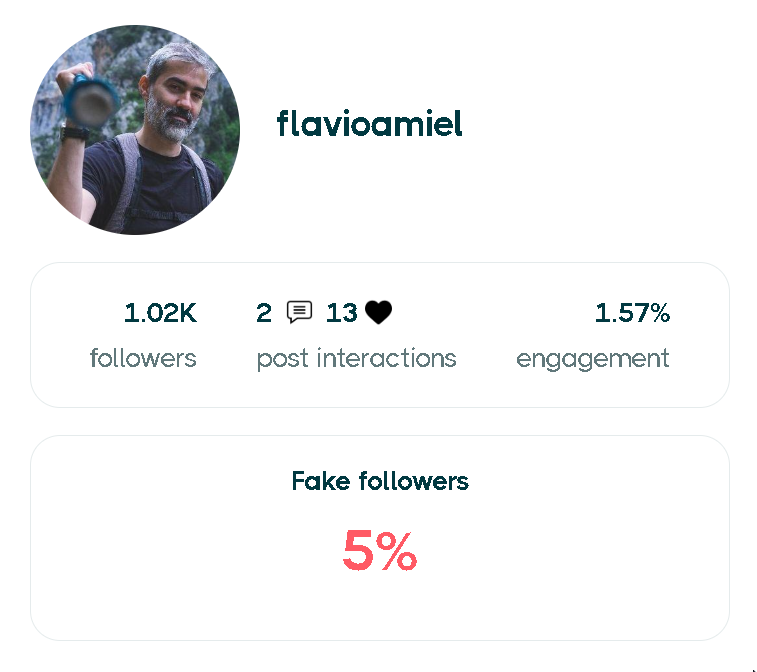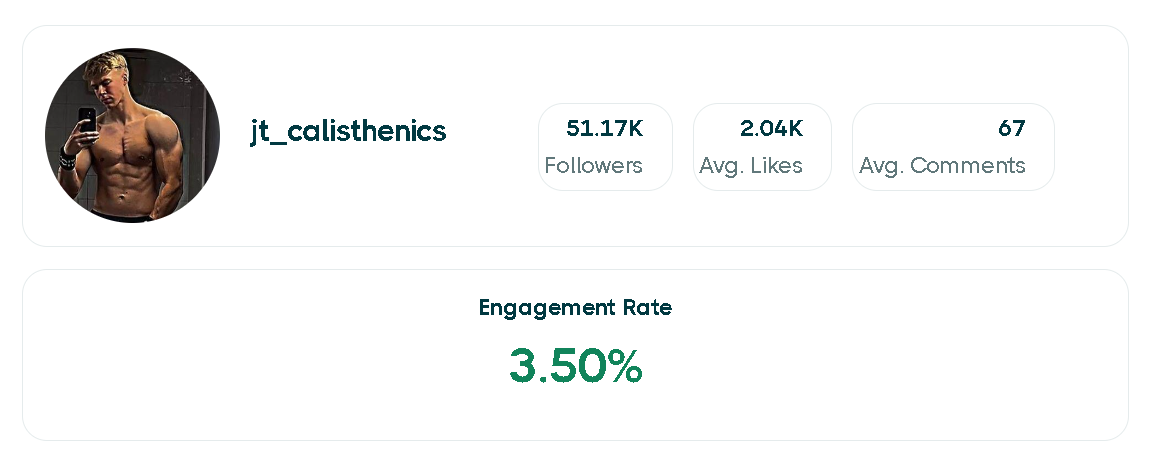Mastering Micro Influencer Marketing in 2024: A Comprehensive Guide
Explore our in-depth guide to mastering micro influencer marketing in 2024. Learn how to connect with your target audience through authentic and impactful campaigns.

In today's fast-paced digital world, micro influencer marketing has emerged as a powerful strategy for brands looking to connect with niche audiences in an authentic and cost-effective manner. Micro influencers, with their highly engaged followers, can drive significant results for businesses of all sizes. This comprehensive guide will take you through everything you need to know about micro influencer marketing in 2024, from understanding what it is to executing successful campaigns and measuring their impact.

Micro influencer specialized in the traveling niche.
Table of Contents
- Introduction
- TL;DR
- What is Micro Influencer Marketing?
- Benefits of Micro Influencer Marketing
- How to Execute a Micro Influencer Marketing Campaign
- Measuring the Success of Your Campaign
- Learnings Recap
- Final Thoughts
Introduction
Micro influencer marketing involves working with social media influencers who have 10,000 to 100,000 followers. These influencers offer high engagement rates and authenticity, making them valuable for niche marketing. Cost-effective and accessible, micro influencer marketing is ideal for small and medium-sized businesses. Executing a successful campaign involves identifying the right influencers, clear communication, and effective tracking. Measuring success requires tracking key metrics such as engagement rates, conversions, and ROI.
TL;DR
-
Micro influencer marketing involves collaborating with influencers who have 10,000 to 100,000 followers.
-
Micro influencers offer high engagement rates and authenticity, making them valuable for niche marketing.
-
Cost-effective and accessible, micro influencer marketing is ideal for small and medium-sized businesses.
-
Executing a successful campaign involves identifying the right influencers, clear communication, and effective tracking.
-
Measuring success requires tracking key metrics such as engagement rates, conversions, and ROI.
What is Micro Influencer Marketing?
Micro influencer marketing involves collaborating with influencers who have a follower count between 10,000 to 100,000. These influencers focus on specific niches, making their endorsements more personal and engaging. Unlike macro influencers, micro influencers are seen as more relatable and trustworthy by their followers.
Definition and Scope
Micro influencer marketing is a subset of influencer marketing where brands collaborate with influencers who have a smaller but highly engaged following. These influencers typically focus on specific niches such as fashion, beauty, fitness, or technology. The scope of micro influencer marketing includes creating authentic content, engaging with niche audiences, and driving higher engagement rates compared to macro influencers.
Characteristics of Micro Influencers
Micro influencers are known for their authenticity, niche expertise, and high engagement rates. Unlike celebrities and mega influencers, micro influencers have a more personal connection with their audience. Their content is often seen as genuine and trustworthy, making them ideal partners for brands looking to build authentic relationships with their target audience.
Authenticity
One of the key characteristics of micro influencers is their authenticity. Their smaller audience allows for more personal interactions, making their endorsements feel genuine and relatable. Micro influencers often share everyday experiences and provide honest recommendations, which resonate with their followers.

An influencer with a small audience have an authentic audience almost free of fake followers and bots.
Niche Expertise
Micro influencers often focus on specific niches, making them experts in their fields. Whether it's fashion, beauty, fitness, or technology, these influencers create content that is highly relevant to their audience. Their specialized knowledge and passion for their niche lend credibility to their recommendations.

A micro influencer who is specialized in a field would be highly trusted by their audience.
High Engagement Rates
Micro influencers typically have higher engagement rates compared to macro influencers. Their followers are more likely to interact with their posts, leaving comments, likes, and shares. This high level of engagement is a key reason why brands prefer working with micro influencers.

Micro influencers have an excellent engagement rate. This means that their audience trust them and engage with their content.
Benefits of Micro Influencer Marketing
Micro influencer marketing offers several benefits that make it an attractive option for brands. These benefits include cost-effectiveness, higher engagement rates, authenticity and trust, and the ability to tap into niche audiences. By partnering with micro influencers, brands can achieve significant results without the hefty price tag associated with macro influencers.
Cost-Effectiveness
One of the primary benefits of micro influencer marketing is its cost-effectiveness. Micro influencers typically charge lower rates compared to macro or mega influencers, making them accessible to small and medium-sized businesses. This affordability allows brands to stretch their marketing budget further and work with multiple influencers.
"Micro-influencers charge between $100-$500 per Instagram post" (Spiralytics).
Authenticity and Trust
Micro influencers are often seen as more authentic and trustworthy compared to celebrities and macro influencers. Their smaller following allows for more personal interactions, and their content is often viewed as genuine and relatable. This authenticity and trust are key reasons why brands prefer working with micro influencers.
"Authenticity and trust have emerged as invaluable commodities in fast-paced influencer marketing campaigns" (Pacific54).
Niche Audiences
Micro influencers often focus on specific niches, allowing brands to tap into highly targeted audiences. Whether it's fashion, fitness, beauty, or technology, micro influencers create content that resonates with their niche audience. This targeted approach can lead to higher conversion rates and more meaningful engagements.

How to Execute a Micro Influencer Marketing Campaign
Executing a successful micro influencer marketing campaign involves several key steps, including identifying the right influencers, creating a campaign strategy, collaborating effectively, and tracking performance. By following these steps, brands can maximize the impact of their campaigns and achieve their marketing goals.
Identifying the Right Influencers
Finding the right micro influencers is crucial for the success of your campaign. This involves researching potential influencers, evaluating their engagement rates and authenticity, and ensuring they align with your brand values and target audience. Using influencer discovery tools can streamline this process.
Influencer Discovery Tools
There are various tools available to help brands discover potential micro influencers. These tools can streamline the process by providing detailed analytics on influencer performance, audience demographics, and engagement rates. Influs, for example, offers a comprehensive platform to find and connect with the right influencers for your brand.
Assessing Engagement and Authenticity
When evaluating potential influencers, it's important to assess their engagement rates and authenticity. Look for influencers who have genuine interactions with their followers, as this indicates a highly engaged audience. Additionally, use tools to identify fake followers and ensure the influencer's audience is authentic.
Make sure to verify the influencer account performance as well the authentificty of their audience.
Creating a Campaign Strategy
Developing a detailed strategy is essential for the success of your micro influencer marketing campaign. This includes setting clear goals, defining your target audience, planning your content, and determining the key messages you want to convey. A well-thought-out strategy will guide your campaign and ensure it stays on track.
Setting Clear Goals
Define what you want to achieve with your micro influencer marketing campaign. Goals could include increasing brand awareness, driving sales, growing your social media following, or enhancing customer engagement. Clear goals will help you measure the success of your campaign and make necessary adjustments.
Content Planning
Plan the type of content you want your influencers to create. Ensure the content aligns with your brand values and resonates with the influencer's audience. Content planning should include the format (e.g., photos, videos, stories), key messages, and any specific guidelines or requirements.

Collaborating with Micro Influencers
Effective collaboration with micro influencers is essential for a successful campaign. This involves clear communication, setting expectations, and providing creative freedom. Building strong relationships with influencers can lead to more authentic and impactful content.
Communication and Briefing
Communicate your campaign goals and expectations clearly to the influencers. Provide a detailed brief that outlines your brand, target audience, content requirements, and key messages. Clear communication will ensure that the influencers understand your expectations and can deliver high-quality content.
Creative Freedom
Allow influencers some level of creative freedom. Influencers know their audience best and can create content that resonates with them. While it's important to maintain brand consistency, giving influencers the freedom to express themselves can lead to more authentic and engaging content.
Compensation and Incentives
Compensating micro influencers fairly is crucial for maintaining good relationships and ensuring high-quality content. Compensation can be monetary or in the form of free products or services. Negotiate rates that are fair and reflect the value the influencer brings to the campaign.
Tracking and Reporting
Track the performance of your micro influencer marketing campaign and generate reports to measure success. Use analytics tools to gather data on key metrics such as engagement rates, reach, conversions, and ROI. Regular reporting will help you understand the impact of your campaign and make necessary adjustments.
Track your micro influencers to see how they perform using our campaign tracking feature.
Measuring the Success of Your Campaign
Measuring the success of your micro influencer marketing campaign involves tracking key performance indicators (KPIs) such as engagement rates, conversion rates, and ROI. By analyzing these metrics, you can understand the impact of your campaign and make data-driven decisions to optimize future campaigns.
Key Performance Indicators (KPIs)
Identify the KPIs that will help you measure the success of your campaign. These could include engagement rates, conversion rates, reach, and ROI. Tracking these metrics will provide valuable insights into the effectiveness of your
campaign and help you make data-driven decisions.
Engagement Rates
Engagement rates measure how actively followers interact with the influencer's content. High engagement rates indicate that the content resonates with the audience and drives meaningful interactions. Track likes, comments, shares, and other forms of engagement to assess the impact of your campaign.
Conversion Rates
Conversion rates measure how effectively your campaign drives desired actions, such as sales, sign-ups, or downloads. Track conversions to understand the impact of your campaign on your business goals. Use tracking links, discount codes, or other tools to measure conversions accurately.
Return on Investment (ROI)
ROI measures the financial return on your investment in micro influencer marketing. Calculate ROI by comparing the revenue generated from your campaign to the costs involved. A positive ROI indicates that your campaign is delivering value for your business.

Learnings Recap
In this guide, we've covered the essentials of micro influencer marketing, including its definition, benefits, execution, and measurement. Key takeaways include the importance of authenticity and niche expertise, the benefits of higher engagement rates and cost-effectiveness, and the steps to execute and measure a successful campaign. By leveraging the power of micro influencers, brands can connect with their target audience in an authentic and impactful way.
Final Thoughts
Micro influencer marketing is a powerful strategy for brands looking to connect with niche audiences in an authentic and cost-effective manner. By understanding the characteristics and benefits of micro influencers, and following best practices for campaign execution and measurement, brands can achieve significant results. As the digital landscape continues to evolve, micro influencer marketing will remain a valuable tool for building authentic relationships and driving business growth.
